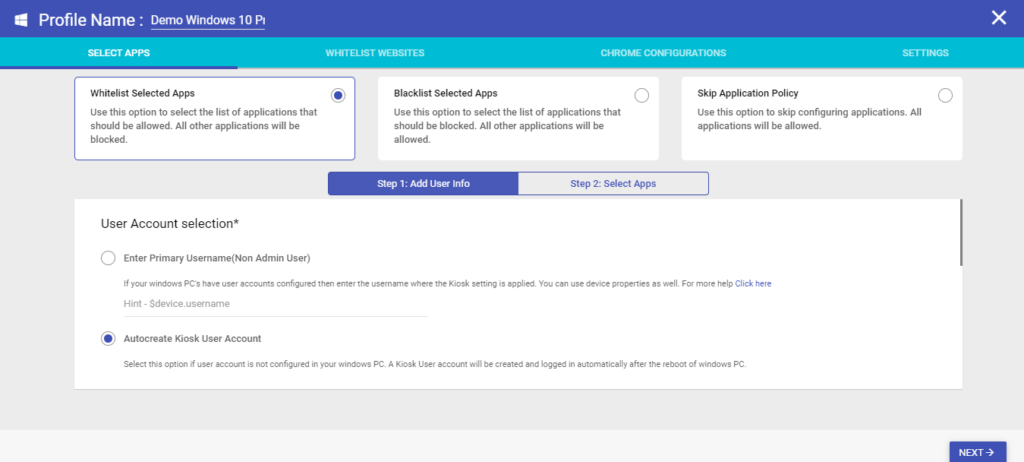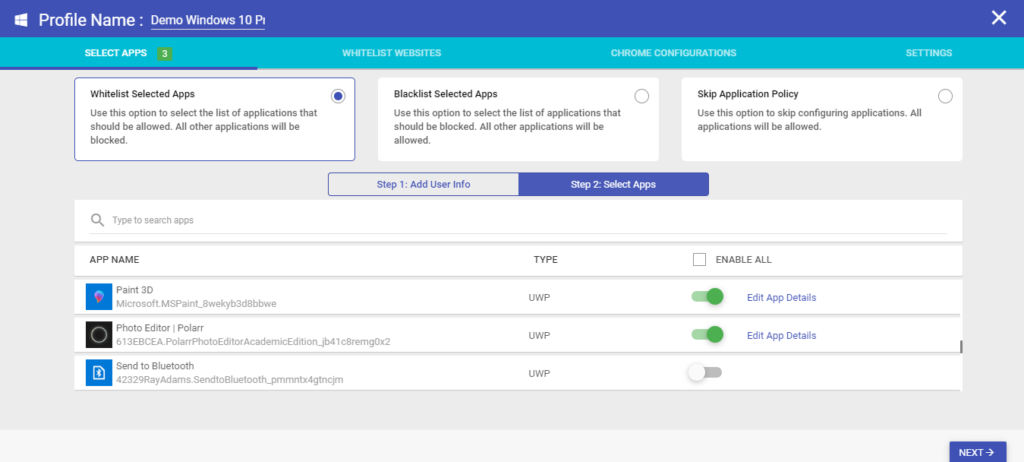How to Whitelist Applications on Windows 10 Devices

Windows 10 devices are widely popular in enterprises as well as educational organizations. Windows Operating System still holds up the majority of the market share for desktops. Thanks to user familiarity, Windows desktops are here to stay.
As Windows 10 computers are deployed for education or business, one of the major challenges is to configure them for designated purposes without hampering the overall user experience.
One of the most critical tasks while managing Windows 10 devices for business or education is to create a comprehensive application policy. In the enterprise environment, non-business or entertainment apps can not only cause employee distractions and lead to excess data usage but also can impact the security of corporate data lying on the enterprise Windows 10 devices. Without a stringent application policy, employees can download any malicious or untrusted application on the Windows 10 devices, imposing threat to data as well as device security. In schools and other educational institutions, uncontrolled app access can cause distractions, defying the purpose of deploying Windows 10 devices.
This is why application whitelisting is critical. With Scalefusion MDM for Windows 10 devices, IT teams can create and enforce extensive application policies. IT admins can whitelist or blacklist applications on Windows 10 devices with ease. IT teams can alternatively lock the Windows 10 device to Single App mode and block the access to any other app.
Let us see how to whitelist applications Windows 10 devices
1. Navigate to Device Profiles in the Device Management section of the Scalefusion dashboard.
2. Select the Windows 10 device profile you want to create the application whitelisting for. You can also start off by creating a new profile.
3. Now your screen will display the settings for application whitelisting and blacklisting.
4. Select the ‘whitelist selected apps’ option. You can add the primary username or choose to auto-create a kiosk account.
5. Now, you can proceed to select the apps that are to be whitelisted on the Windows 10 devices. You can choose from a list of UWP and Win32 apps. You can also edit the app details such as the app name and app icon for further configuration. Click on next to continue and save settings.
All the apps except the ones whitelisted will be automatically blocked on the Windows 10 devices managed by Scalefusion.
Learn more: How to lockdown Windows 10 devices to multi-app kiosk mode
6. Instead of application whitelisting on Windows 10 devices, you can also opt for application blacklisting.
In these simple steps, applications can be whitelisted on Windows 10 devices. Application whitelisting can help mitigate the preliminary IT challenges of blocking non-business apps and ensuring employee productivity with up-to-date business apps on Windows 10 devices.
*** This is a Security Bloggers Network syndicated blog from Scalefusion Blog authored by Renuka Shahane. Read the original post at: https://blog.scalefusion.com/whitelisting-applications-on-windows-10-devices/











